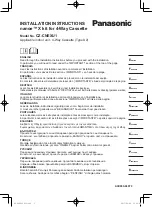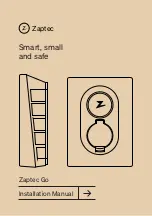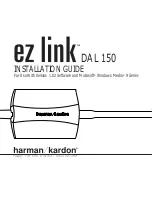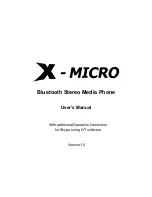
Due to the dynamic nature of the product design, the information contained in this document is subject to change without notice. Viking Electronics, and its affiliates and/or subsidiaries
assume no responsibility for errors and omissions contained in this information. Revisions of this document or new editions of it may be issued to incorporate such changes.
DOD# 245
Printed in the U.S.A.
P
P
r
r
o
o
d
d
u
u
c
c
t
t
S
S
u
u
p
p
p
p
o
o
r
r
t
t
L
L
i
i
n
n
e
e
.
.
.
.
.
.
7
7
1
1
5
5
.
.
3
3
8
8
6
6
.
.
8
8
6
6
6
6
6
6
F
F
a
a
x
x
B
B
a
a
c
c
k
k
L
L
i
i
n
n
e
e
.
.
.
.
.
.
7
7
1
1
5
5
.
.
3
3
8
8
6
6
.
.
4
4
3
3
4
4
5
5
ZF303220 Rev 11
G. Line Verification Test
In accordance to ASME A17.1, the
LC-6
has the ability to check the incoming telephone line for operability on a daily
basis. The lines running from the
LC-6
to each of the Viking
1600A Series
emergency phones will also be tested at
this same time.
The
LC-6
verifies the telephone line has loop current, and that each of the emergency phones will answer an incom-
ing call. When a fault is detected, an audible and illuminated visual alarm showing “ELEVATOR COMMUNICATIONS
FAILURE” will display on both the optional
LM-24D
displays and the optional
LV-1K
line verification alarm panel. Once
the fault is corrected, the alarm state will clear within two minutes.
H. LV-1K Line Verification Alarm Panel
The
LC-6
has a two position terminal block for connection to an optional
LV-1K
line verification alarm panel. In accord-
ance to ASME A17.1, the
LV-1K
has “ELEVATOR COMMUNICATIONS FAILURE” labeled in ¼” high letters, and will
flash a red light and sound an audible signal every 30 seconds when a line verification fault is detected. The
LV-1K
line
verification alarm panel can service a group of elevators controlled by a Fire Recall switch, and must be located in the
vicinity of that switch and be visible to elevator users.
I. LM-24 Displays
The
LC-6
has a two position terminal block for connecting one or two optional Viking model
LM-24D
displays. The
optional displays provide a visual status of all the phones and the telephone line. When in use, the corresponding LED
will light steady, and a ringing phone will show as a flashing LED. Emergency phones that are conference bridged into
an existing emergency phone conversation, are displayed as a lit LED that winks once every few seconds.
The
LM-24D
displays will also show the testing status during the line verification tests. When all line verification tests
pass, the “PASSED” LED will light. If a fault is found, the
LM-24D
displays will flash “ELEVATOR COMMUNICATIONS
FAILURE” along with the line(s) that failed, and an audible signal tone will sound. The volume control on the front of
the
LM-24D
display can be used to control the volume of the audible signal tone.
The optional
LM-24D
displays are useful for personnel using the Fire Floor phone, Machine Room phone, and/or Lobby
phones. The
LC-6
can power one or two
LM-24D
displays. Displays that are run greater than 400 ft (122 m) away may
need a Viking model
PS-2
12VDC power supply added for proper operation. With the power supply added, run lengths
of up to 800 ft (244 m) can be achieved.
Fill out the
LM-24D
Identification Card as shown below:
8
DIAL 1
ELEVATOR 1
DIAL 2
ELEVATOR 2
DIAL 3
ELEVATOR 3
DIAL 4
ELEVATOR 4
DIAL 5
ELEVATOR 5
DIAL 6
ELEVATOR 6
DIAL 7
FIRE FLOOR PHONE
DIAL 8
MACH/LOBBY PHONES
DIAL 9
TELEPHONE LINE
PROGRAMMING
TESTING
PASSED
ELEVATOR
COMMUNICATIONS
FAILURE


























